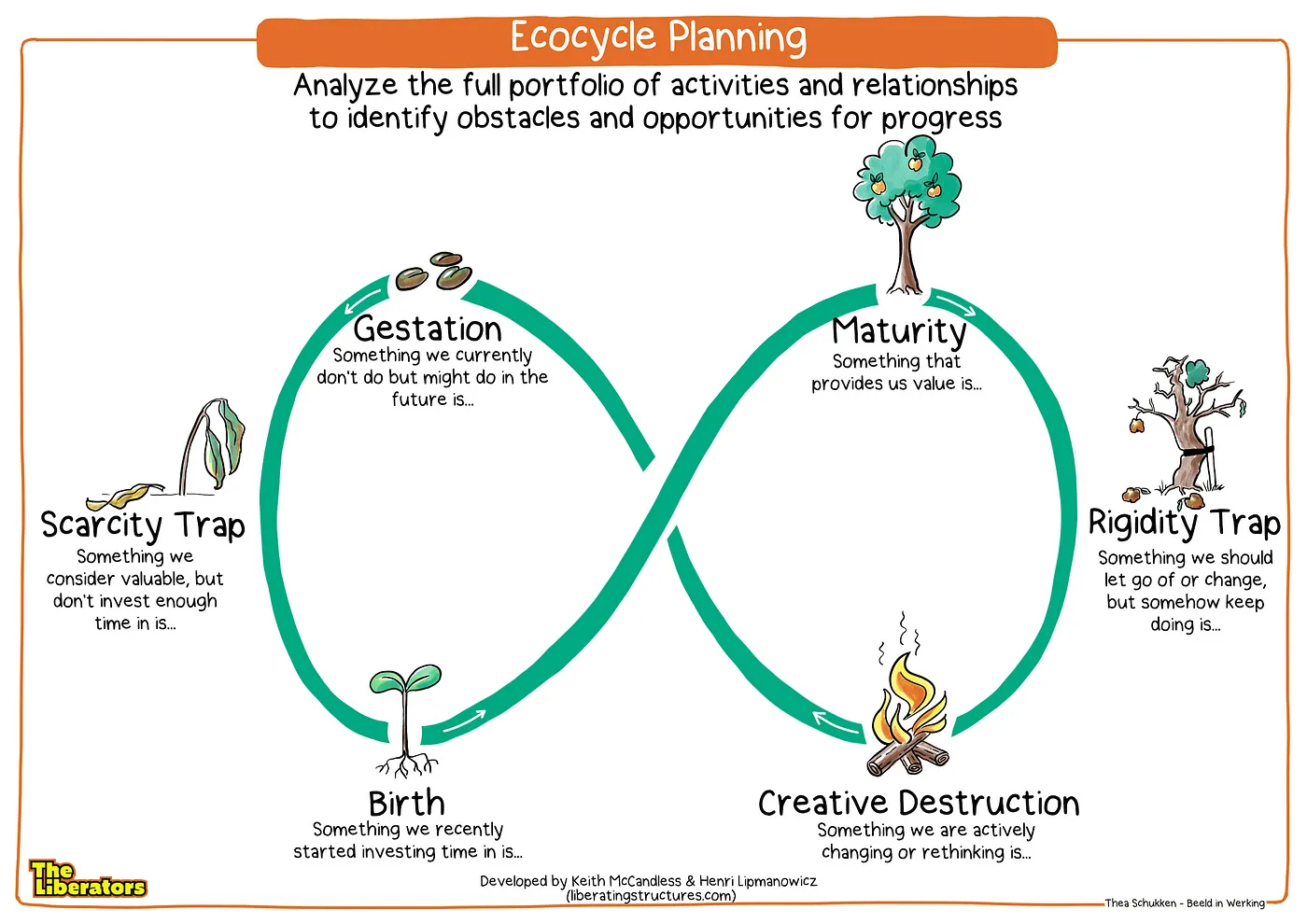This article is a follow-up post to “Agile is Dead.”
Despite frequent claims of Agile's death, I don't consider this to be true. Instead of being dead, it's evolving.
Evolution is challenging. It requires you to reinvent yourself and to let go of old behaviors and activities. Maybe even activities that once were valuable. It's a necessary step to create space for new ideas to emerge. Ideas that better suit the also changed environment.
The good news is that if you successfully reinvent yourself, a world of new possibilities opens up! 🥳
In short, this is what the Liberating Structure "Ecocycle Planning" is about. Its purpose is to analyze activities and identify obstacles and opportunities for progress in a non-linear way. It is based on the cycle of life. 🌲
Activities continuously flow through the Ecocycle. But they can also get stuck in the traps. This is where innovation or evolution stops.
It's interesting to think about Agile in the context of Ecocycle Planning. Many organizations have gone through this cycle in the last decade(s). Some organizations multiple times (which seems healthy), others only once, and some are stuck in the traps.
The accumulation of all the individual Ecocycles (one for each organization) defines the state of Agile in general.

So, what do the recent claims of Agile's death tell us? 🤔
For some organizations, Agile might be in...
💥 Creative Destruction: hopefully, it was in Maturity at some point. This means they got some value out of Agile. Right now, they are actively changing and rethinking how to get more value with an Agile way of working.
🙈 Rigidity Trap: even though everyone in the organization understands their current usage of Agile isn't successful, they keep doing things as they've always done. They are ignoring the reality that screams for change.
❌ Scarcity Trap: because non-Agile activities are stuck in the Rigidity Trap (which consumes time, energy, and focus), organizations also don't have time for activities that would make them truly Agile.
For organizations whose Agile way of working is stuck in one of the traps, it might be considered a lifeless entity. If this pattern exists across organizations, I can understand the 'Agile is death' claims.
Yet, I'm hopeful. 😃
Most organizations *can* bring movement in their Ecocycle. They *can* get unstuck. Some can do this by themselves; others need guidance. This is where we play an essential role as an Agile community.
Not by bashing, complaining, and being dogmatic. But by showing compassion, empathy, and a supportive attitude. Servant leadership, anyone?
What's your take on this? Does the Ecocycle Planning example make sense?
